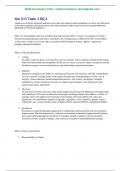Summary
Summary HRD3702_Study Notes_Workbook_01
- Institution
- University Of South Africa (Unisa)
Summary study book Managing Training and Development of Melissa Du Plessis, Thobeka Mda, Pieter S. Nel (Workbook 01) - ISBN: 9780190722142 (Workbook 01)
[Show more]












